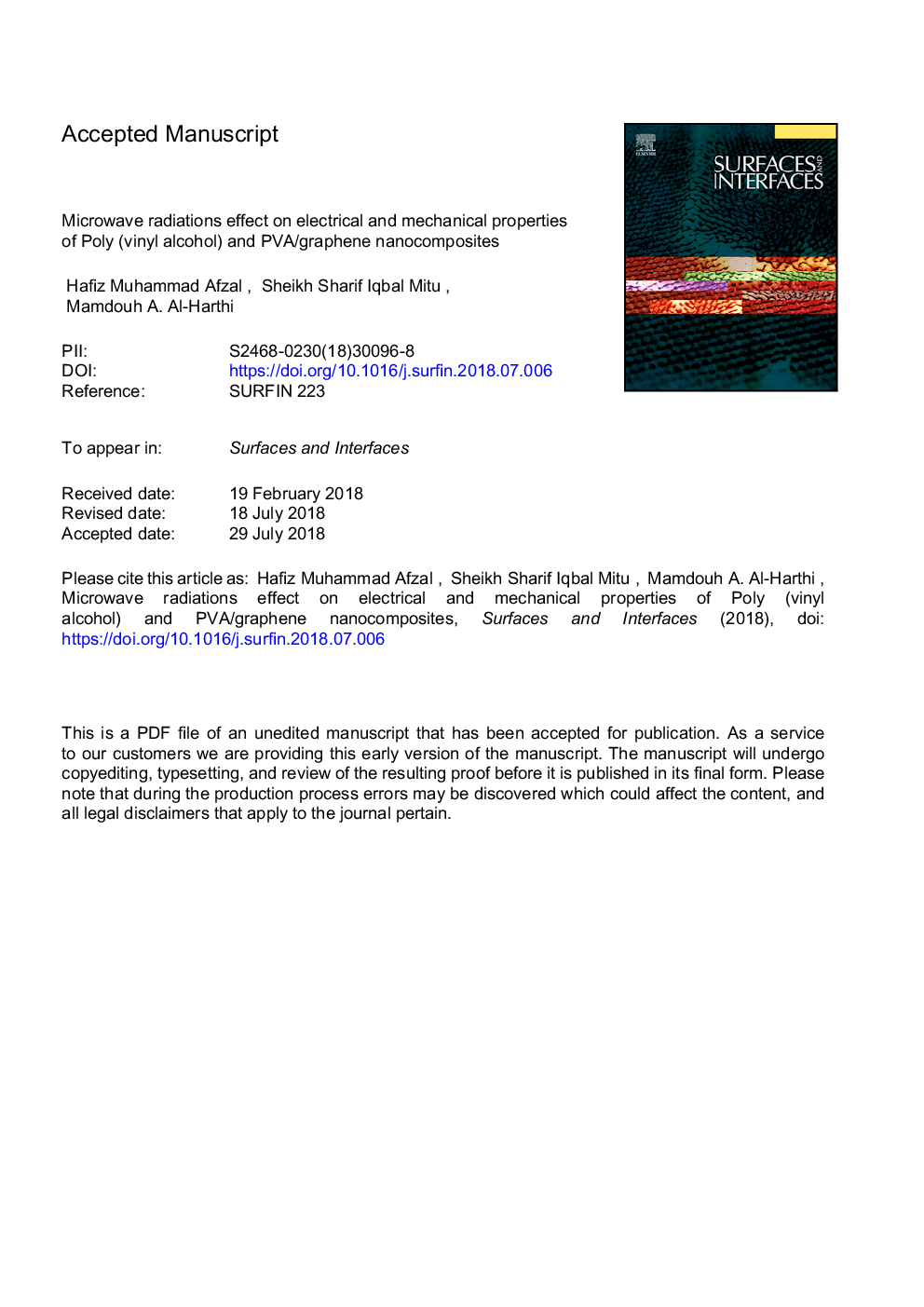| Article ID | Journal | Published Year | Pages | File Type |
|---|---|---|---|---|
| 9952521 | Surfaces and Interfaces | 2018 | 37 Pages |
Abstract
Solution casting technique was used to prepare electrically conductive nanocomposites. Graphene was used as conductive inclusive in the Poly (vinyl alcohol) matrix. Nanocomposites further irradiated using microwave radiation for different interval of time (5, 10 and 15â¯min). Different characterization techniques were utilized including SEM, XRD and Raman Spectra to completely understand the properties change in non-irradiated and irradiated sample. Increase in electrical conductivity was observed with the increase in graphene percentage. Sample with 10% graphene inclusion exhibited 3.55 S/cm electrical conductivity with comparison to 0.021 S/cm for 1% graphene composite. Percolation threshold was observed for the sample holding 5% graphene with the electrical conductivity value of 2.17 S/cm. Different empirical models were also used to produce the trends for conductivity of composite at different graphene percentages. It was observed that the Scarisbrick model with the 0.1 geometrical factor (C) affirmed the harmonization in theoretical and experimental values of electrical conductivity. Electromagnetic inference shielding effectiveness was perceived for different composite samples using vector network analyzer (VNA). Observations show the increase in EMI shielding with the increase in graphene percentage. Moreover, both electrical conductivity and Electromagnetic inference shielding effectiveness improved after radiation. Due to agglomeration and bi-layered structure domination, tensile properties of composite films were found to be decreased especially at high graphene.
Keywords
Related Topics
Physical Sciences and Engineering
Chemical Engineering
Colloid and Surface Chemistry
Authors
Hafiz Muhammad Afzal, Sheikh Sharif Iqbal Mitu, Mamdouh A. Al-Harthi,
